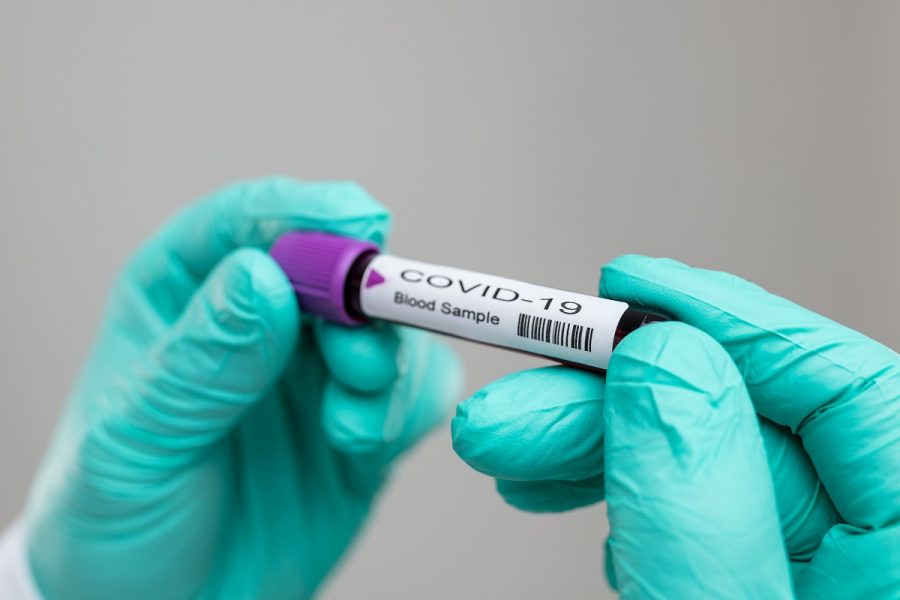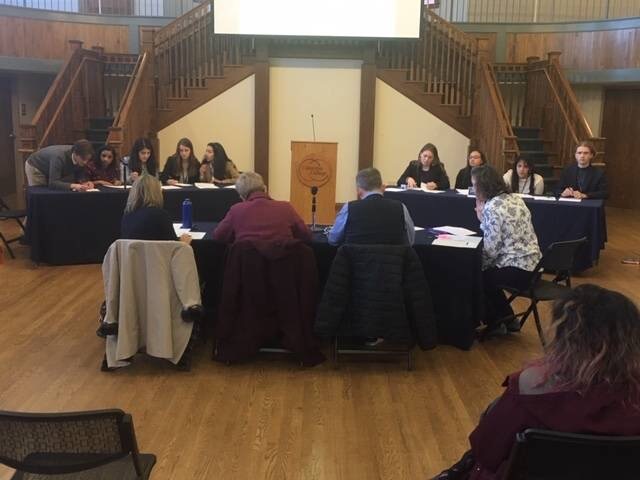An emergent strain of a virus, formally named severe acute respiratory syndrome coronavirus 2 (SARS-CoV-2) by the International Committee on Taxonomy of Viruses, causes the coronavirus disease, named COVID-19 by the World Health Organization (WHO). The family of coronaviruses causes illness ranging from the common cold to more severe diseases such as the COVID-19, which originated in Wuhan, China and has infected more than 181,000 people globally and killed more than 7,000.
The Chinese government closed off the city Wuhan, with a population of more than 11 million people, by cancelling planes and trains leaving the city as well as suspending buses, subways and ferries within it to prevent the spread of the COVID-19 disease. Sophomore Kyle Chen’s grandparents, part of an age group at increased risk for severe illness, live in Wuhan and have stayed in their apartment building for over a month and have not gone outside.
“Before the Wuhan city shutdown, my grandparents had already bought a lot of food online,” Chen said. “Their close friends bring them food and take out their trash. Once, someone in their apartment building was suspected of having the coronavirus, and the entire apartment was quarantined for a few days.”
Chen said his family may push back their annual summer vacation plans to visit his grandparents because of the coronavirus. He said his parents instruct him to wash his hands more often, like the CDC recommends. They also recommend “everyday preventive actions to help prevent the spread of respiratory diseases,” such as covering coughs and sneezes with tissues and disinfecting frequently touched objects.
While most cases are mild and require little to no medical intervention, coronavirus can be fatal for the elderly and those with underlying disease or conditions, according to the Washington Post. In fact, the WHO rated the global risk assessment as very high, the same as their rating for China.
Columbia Public Schools (CPS) superintendent Peter Stiepleman said in an email to CPS faculty and staff members and parents on March 16, “March 17, Columbia Public Schools will be the last day our school buildings will be open to students. At the moment of closing, all athletics and activities will be suspended. At this time, we plan to reopen on Monday, April 13. We will continue to monitor the situation and adjust our plans as necessary.”
In addition to CPS, the University of Missouri—Columbia prohibited study abroad travel to China, South Korea and Italy for spring, spring break and summer 2020. The Centers for Disease Control and Prevention (CDC) issued a Warning Level 3 for these countries, recommending people avoid all nonessential travel to them, which the University follows. The University even recommends people reconsider independent travel to countries with a CDC Warning Level 3.
Further measures to minimize coronavirus involve research to develop cures, such as that of Dr. Dong Xu’s lab. Dr. Xu is a professor in the Electrical Engineering and Computer Science Department at the University of Missouri—Columbia.
“We do basic medical research to develop fundamental methods, but we also want to solve real world problems [to] make an impact,” Dr. Xu said. “So we’ll do some fundamental studies and try to understand this virus, how it works and how this disease started and evolves.”
Dr. Xu called his lab a “tool [for] computational studies,” where he designs drugs which other labs will synthesize, and he creates models of proteins receptors. This method of using software tools for understanding biological data, called bioinformatics, is often used for the development of pharmaceuticals. He said in bioinformatics, he must analyze the biological sequences and predict which proteins the virus will interact with. The coronavirus, Dr. Xu said, matches with some proteins such as one called ACE2, which plays a crucial role in the entry of the virus into the cell.
“This protein is not the only receptor,” Dr. Xu said. “So, we are predicting additional receptors. We’ve made some good predictions, [and] it looks very reasonable.”
Even though China is still receiving new patients every day, the virus is mostly under control, Dr. Xu said. He also said although there isn’t an outbreak in the U.S., the coronavirus infects people extremely fast—on average, one person can infect two or three others.
Research groups such as Moderna Inc. and Inovio Pharmaceuticals Inc. are trying to have their vaccines ready for testing on people in just 16 weeks after reviewing the diseases’s genetic sequence. Historically, however, vaccines haven’t been finished in time to help during outbreaks of this caliber. Shots played limited roles in slowing down the 2016 Zika epidemic in Latin America and the 2014-2016 West African Ebola epidemic because it can take months, if not years, to develop them. The seasonal influenza vaccine, for
example, takes at least six months to produce in large quantities.
Infographic by Riley Kerns. [Source: worldometer.info]
Vaccinations have to pass many stages before they are released to the public. Firstly, labs must go through an exploratory stage where they identify natural or synthetic antigens that might help prevent or treat a disease, according to the College of Physicians of Philadelphia. Secondly, pre-clinical studies use tissue-culture or cell-culture systems and animal testing to assess the safety of the candidate vaccine and its ability to provoke an immune response. Thirdly, the U.S. Food and Drug Administration (FDA) has to approve the vaccine in order to move on to clinical trialing. After it is proved to be successful in human testing, the FDA can then license it.
Even if the vaccinations can’t help immediately, they can in the future in case of another outbreak, according to CNN. When another Ebola outbreak began in 2018, two treatments scientists developed from the first outbreak were offered to all patients in the Democratic Republic of the Congo.But sometimes, viruses become “burnt out.” In the case of the 2003 SARS-CoV which infected more than 8,000 people, it was brought to an end in May of that same year because of the hot weather change. That doesn’t mean COVID-19 would be gone for good if it burnt out, though; the H1N1 flu strain caused a pandemic in 2009, and now it has become a seasonally occurring virus. There isn’t enough information to predict whether or not the coronavirus will burn out or reoccur, but labs such as Dr. Xu’s can develop drugs in the meantime, as cures are much faster to make than immunizations.
“We will [put work] in for several months to get some really good results,” Dr. Xu said. “And this disease, however, lasts for several months, so we really need to work on it for some time. And ultimately these may come back in the future. So it’s not just for now; we need to solve some problems and hopefully we’ll also help in the future.”
What information have you received about COVID-19? Let us know in the comments below.














































































